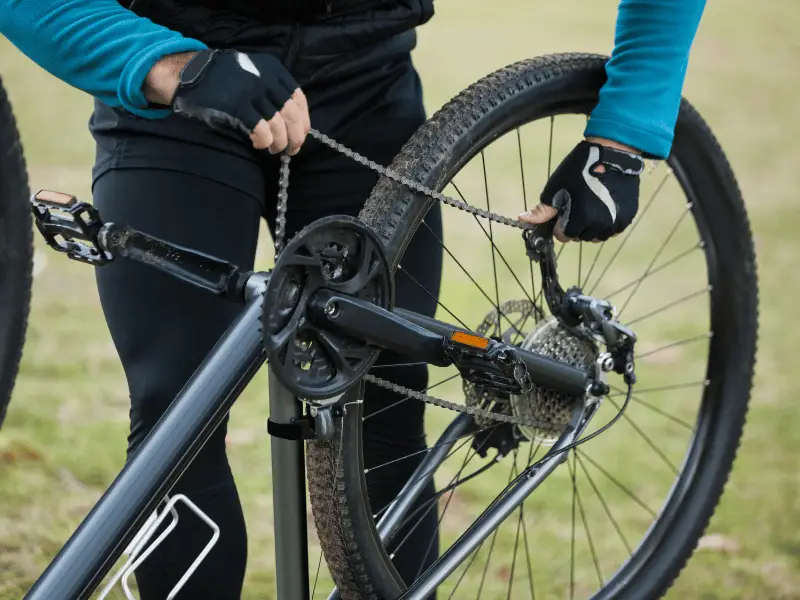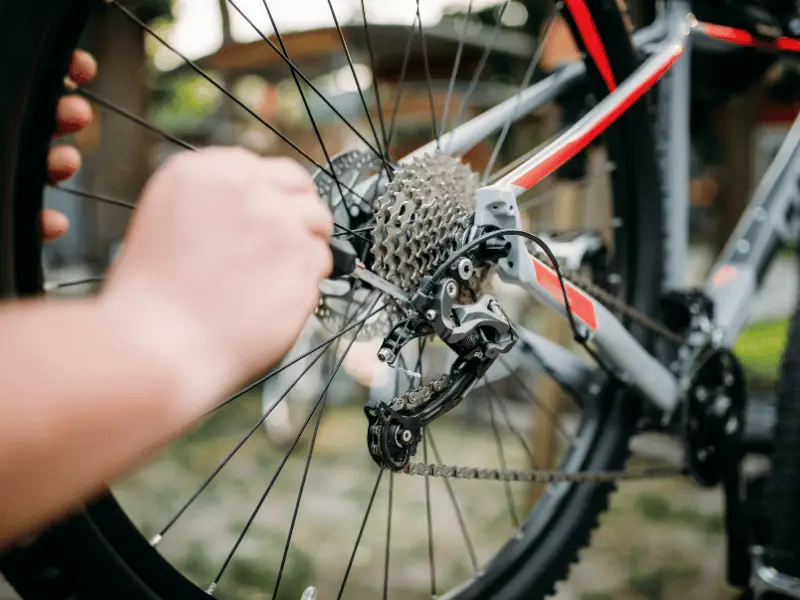
Mountain biking is a thrilling and adventurous outdoor activity that requires a lot of skills and the right equipment. One of the essential components of a mountain bike is the clutch. A clutch is a mechanism that prevents the pulley cage of the rear derailleur from moving forward freely. This mechanism helps maintain the chain’s tension, prevent chain slip, and ensure that the chain stays on the chainring.
The purpose of a clutch on a mountain bike is to ensure that the chain stays in place when the rider is going over rough and bumpy terrain. The clutch helps to keep the chain securely in place throughout the ride, preventing it from dropping off the chainring. This is important because a loose chain can cause the rider to lose control of the bike and potentially cause an accident. The clutch also reduces the amount of noise that the chain makes when riding on rough terrain, making for a more enjoyable ride.
Key Takeaways
- A clutch is a mechanism that prevents the pulley cage of the rear derailleur from moving forward freely.
- The clutch is crucial for maintaining the chain’s tension, preventing chain slip, and ensuring that the chain stays on the chainring.
- The clutch helps to keep the chain securely in place throughout the ride, reducing noise and preventing accidents.
Fundamentals of a Clutch
Definition and Role
A clutch is an important component of a mountain bike’s rear derailleur system. Its primary function is to maintain chain tension and prevent chain slippage, particularly when riding over rough terrain. The clutch mechanism works by increasing the resistance in the derailleur’s tension pulley, which in turn reduces the amount of slack in the chain. This helps to keep the chain in place and prevent it from bouncing around or falling off the chainring.
Components of a Clutch
A typical clutch system consists of several components, including a clutch lever, clutch cable, and clutch mechanism. The clutch lever is usually located on the derailleur body and is used to engage or disengage the clutch mechanism. When the clutch is engaged, the derailleur cage is held in place, and the tension pulley is pushed forward, creating more tension on the chain.
The clutch cable is responsible for transmitting the force from the clutch lever to the clutch mechanism. This cable is usually made of stainless steel and is designed to be both durable and flexible. The clutch mechanism itself is typically located inside the derailleur body and consists of a clutch plate, clutch spring, and clutch arm. When the clutch lever is engaged, the clutch plate is pushed against the clutch spring, creating more resistance in the tension pulley.
Operation of a Clutch
A mountain bike clutch is a small but crucial component of the rear derailleur that helps to maintain chain tension, prevent chain slap, and reduce chain drop. The clutch is designed to keep the pulley cage of the rear derailleur from moving forward freely, which stops the chain from bouncing around and potentially causing damage or dislodging from the frame.
Engagement and Disengagement
When the clutch is engaged, the pulley cage is held firmly in place, which means that the chain is under constant tension. This prevents the chain from bouncing around and reduces the likelihood of it falling off the chainring. However, when the clutch is disengaged, the pulley cage is allowed to move more freely, which makes it easier to shift gears.
Modulation and Control
The clutch is designed to be adjustable, which means that riders can fine-tune the tension to suit their riding style and the terrain they are riding on. By increasing the tension, riders can reduce chain slap and chain drop, which is particularly useful when riding over rough terrain. However, increasing the tension can also make it more difficult to shift gears, which is why the clutch is designed to be adjustable.

Types of Clutches
Mountain bike clutches come in different types, each with its unique features and advantages. Here are some of the most common types of clutches:
Friction Clutches
Friction clutches, also known as mechanical clutches, are the most common type of clutches used on mountain bikes. They work by resisting the forward rotation of the derailleur cage, which helps to maintain chain tension. When the bike hits a bump, the clutch will engage, preventing the derailleur cage from moving forward freely, thus keeping the chain tight and preventing chain slip. Friction clutches are simple, reliable, and easy to adjust. They are also lightweight and affordable.
Hydraulic Clutches
Hydraulic clutches are a relatively new technology that is gaining popularity in the mountain biking world. They work by using hydraulic fluid to control the tension on the chain. When the bike hits a bump, the hydraulic clutch will engage, preventing the derailleur cage from moving forward freely, thus keeping the chain tight and preventing chain slip. Hydraulic clutches are more expensive than friction clutches, but they offer better performance and are more durable. They are also easier to adjust, and they require less maintenance than friction clutches.
Overall, the type of clutch you choose will depend on your riding style, budget, and personal preferences. While friction clutches are more common and affordable, hydraulic clutches offer better performance and durability.
Benefits of Using a Clutch
Mountain biking is an exhilarating sport, but it can also be pretty rough on your gear. One of the most crucial components of a mountain bike is the rear derailleur, which is responsible for shifting gears and keeping the chain in place. A clutch is a mechanism that can help keep your chain in place and reduce the risk of derailment, especially when riding over uneven or technical terrain.
Improved Control
One of the primary benefits of using a clutch on a mountain bike is improved control. The clutch mechanism actively increases the tension in the rear derailleur, preventing the chain from bouncing or slapping excessively. This is particularly advantageous when riding over uneven or technical terrain, as it reduces the risk of the chain coming off the chainring or getting caught in the derailleur.
Enhanced Performance
Another benefit of using a clutch on a mountain bike is enhanced performance. By keeping the chain in place, the clutch allows for smoother and more efficient shifting. This means that riders can shift gears more quickly and accurately, making it easier to maintain speed and tackle challenging terrain. Additionally, the clutch can reduce chain wear and tear, which can extend the life of your bike’s drivetrain.
In conclusion, using a clutch on a mountain bike can provide a range of benefits, including improved control and enhanced performance. Riders who frequently tackle rough or technical terrain should consider investing in a bike with a clutch mechanism to help prevent chain derailment and ensure a smoother, more efficient ride.
Common Issues and Solutions
Wear and Tear
Over time, the clutch on a mountain bike can experience wear and tear, resulting in decreased performance. This can manifest in a variety of ways, such as a loose chain or difficulty shifting gears. If this occurs, it may be necessary to replace the clutch mechanism entirely.
To prevent wear and tear from occurring prematurely, it is important to keep the clutch clean and well-lubricated. Regular maintenance can help to extend the life of the clutch and ensure that it continues to function properly.
Contamination
Another common issue with mountain bike clutches is contamination. Dirt, debris, and other particles can accumulate on the clutch mechanism over time, causing it to become less effective. This can lead to a variety of problems, including chain slippage and difficulty shifting gears.
To prevent contamination from occurring, it is important to keep the clutch mechanism clean and free of debris. Regular cleaning can help to prevent the buildup of dirt and other particles, ensuring that the clutch continues to function properly.
In addition to regular cleaning, it may be necessary to replace the clutch mechanism if contamination has caused significant damage. This can help to restore the performance of the bike and ensure that it continues to function properly.
Upgrades and Considerations
Clutch Upgrades
Upgrading the clutch on a mountain bike can significantly improve its performance. A clutch with a stronger spring can help keep the chain in place, reducing the chances of it falling off the chainring. Some clutches also have adjustable tension, which allows riders to fine-tune the clutch’s performance to match their riding style.
When upgrading the clutch, it is essential to ensure compatibility with the rest of the bike’s components. For example, some clutches may not work well with certain derailleurs or cassettes. It is also important to consider the type of riding the bike will be used for. A clutch that works well for downhill riding may not be the best choice for cross-country riding.
Compatibility with Bike Components
When considering a clutch upgrade, it is important to ensure compatibility with other bike components. For example, some clutches may not work well with certain derailleurs or cassettes. It is also important to consider the type of riding the bike will be used for. A clutch that works well for downhill riding may not be the best choice for cross-country riding.
Compatibility issues can also arise when upgrading other bike components. For example, upgrading the cassette may require a new derailleur or chain. It is important to consider all the components that may be affected by the upgrade and ensure that they are compatible with each other.
Overall, upgrading the clutch on a mountain bike can be a great way to improve its performance. However, it is important to ensure compatibility with other bike components and consider the type of riding the bike will be used for.
